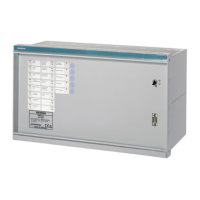Operating Principles Page G-9
Oxygen Saturation (Estimated)
Oxygen saturation (O
2
SAT) is a ratio, expressed as a percentage of the
volume of oxygen carried to the maximum volume that can be carried.
Knowledge of oxygen saturation is useful for predicting the amount of
oxygen actually available for the tissues and can be used to determine the
effectiveness of oxygen therapy.
NOTE: Clinically significant errors can result from incorporating an
estimated O
2
SAT value in further calculations, such as shunt fraction (Qsp/
Qt), or by assuming that the value obtained is equivalent to fractional
oxyhaemoglobin
18
.
N
4
– 15N
3
+ 2045N
2
+ 2000N
O
2
SAT = x 100
N
4
– 15N
3
+ 2400N
2
– 31,100N + (2.4 x 10
6
)
where N = pO
2
x 10
[0.48(pH–7.4) – 0.0013 BE(B)]
Because oxygen saturation also depends on the level of carbon monoxide
and 2,3 diphosphoglycerate (2, 3 DPG) in the blood, the calculated value for
oxygen saturation may not be equal to that actually measured for patients
showing abnormal levels of 2, 3 DPG or carbon monoxide. The equation
does not account for these variations, therefore the oxygen saturation that
is reported should only be used as an estimate of the actual value.
Total Carbon Dioxide (ctCO
2
)
Total carbon dioxide (ctCO
2
), in combination with pH and pCO
2
, is useful in
distinguishing between metabolic and respiratory acid-base disorders.
Carbon dioxide exists in several forms in blood plasma, but only two forms,
dissolved CO
2
and HCO
3
–
are quantitatively significant. Based on NCCLS
recommendations
16
, the following equation is used:
ctCO
2
= cHCO
3
–
act
+ (0.0307 x pCO
2
)
Patient Temperature Correction
All measurements and calculations are based on a standard temperature of
37°C. Actual patient temperature values can be entered during sample
analysis which allows the 248 to provide temperature corrected results.
The following equations, based on NCCLS recommendations
16
, are used:
pH(T) = pH – (0.0147 – 0.0065 x (7.4 – pH)) x (T – 37)
pCO
2
(T) = pCO
2
x 10
(0.019 x (T – 37))
pO
2
(T) = pO
2
x 10
(A x (T – 37))
where A = 5.49 x 10
–11
x pO
2
3.88
+ 0.071
9.72 x 10
–9
x pO
2
3.88
+ 2.3
and where T = 37°C if not entered.

